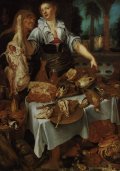 The
Poulet Gauche Poster Girl -- Diagrams and Tips
The
Poulet Gauche Poster Girl -- Diagrams and Tips
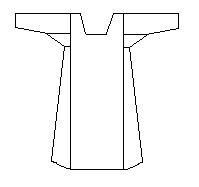
Chemise or shift:
White or off-white linen. Simple squarish neck, moderate width sleeves.
The neck is fairly wide and does not show under the other clothing. The
sleeves are usually rolled up to the elbow for work. You may want to leave
the sleeve open at the bottom in order to be able to roll it up. The opening
can be closed with a hook and eye or a tie (poked through the fabric between
the threads with an awl, without breaking any threads -- see men's shirts).
Underarm gussets are necessary to have sufficient freedom of movement.
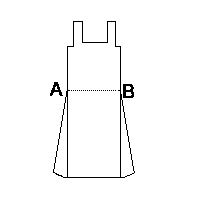
Underdress or Kirtle:
Colored linen; red, pink, or plum being especially popular. This is a square-necked,
sleeveless underdress that is probably pretty shapeless. It goes over the
chemise and under the bodice. It may not be full-length.
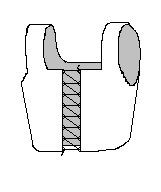
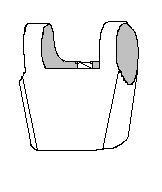
Bodice:
Wool, sometimes linen. Earth colors, reds, russet, yellow, brown, dark
green, dark blue, grey, charcoal, are all good colors. This bodice is unboned.
It has rings sewn along the front edges, and a ribbon laced through them
to fasten. The lacing is done with a single length of ribbon, tied at one
end, and laced from opposite ring to ring to the other end (rather than
our usual method of lacing shoes, where a lace is doubled and laced from
each side simultaneously). The side seams are not usually directly under
the arm, but a set a little to the back, like a princess seam.
The bodice should be lined (with linen) and interlined as well (wool
is a soft and stretchy fabric). It is good idea to put twill tape between
bodice and lining along the edges where the rings will be sewn, to provide
some sturdiness. The amount of gap in front is quite variable, easily adjusted
as women gained and lost weight (often because of annual pregnancies).
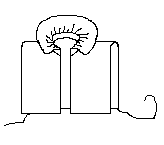
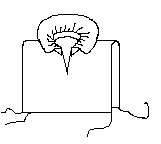
Partlet:
White or off-white linen. There are two styles of partlet. On the left,
is a partlet open all the way down the front. There are two ties, one on
each side of the back. The ties are brought around and tied in front, with
the two front pieces tucked under the tie. On the right is a partlet that
has only a placket in front. It has ties at both front and back corners,
which are tied together under the arms. The first style is probably easier
for a woman to put on by herself.
The collar varies in width, being quite narrow in the 1550s and '60s,
and fairly wide by 1600. The collar is gathered to the neck band like a
ruffle, it is not pleated. The "figure 8" look that is seen on ruffs in
pictures is achieved by dipping the partlet in starch and setting the collar
with a hot poking stick -- a device that resembles a curling iron. It probably
wilted quite a bit after a few days of wearing.
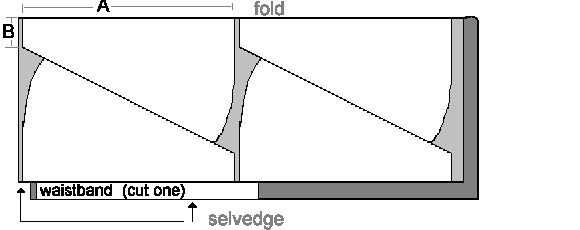
Petticoat:
Wool, sometimes linen. Often matches the bodice. There is often more than
one of these, the underneath ones being of brighter and finer fabric. The
petticoat is cut in four A-shaped panels and pleated to a waistband. The
most proper method is cartridge pleating. This gives a woman's hips the
correct and desirable shape for the time period. It is a good idea to give
the waistband sufficient overlap so that it can be adjusted over time.
The above is the most efficient way to cut such a petticoat on 54"-60"
wide wool with no nap. Measurement A is from waist to above the
ankle, plus seam and hem allowance. Working women did not trail their skirts
on the ground, and they can even be as high as mid-calf. Measurement B
is at least three times the waist measurement divided by 8. Sew the matching
selvedge edges together first, using these pieced-together "A" panels for
the two back panels, and the folded "A" panels for the two front panels.
 Home
to Poulet Gauche
Home
to Poulet Gauche Back
to Clothing
Back
to Clothing Bibliography
Bibliography
-c.
t. iannuzzo
 The
Poulet Gauche Poster Girl -- Diagrams and Tips
The
Poulet Gauche Poster Girl -- Diagrams and Tips The
Poulet Gauche Poster Girl -- Diagrams and Tips
The
Poulet Gauche Poster Girl -- Diagrams and Tips





